Disclosure: This content may contain affiliate links. Read my disclosure policy.
This article explains how to identify and sustainably harvest pine needles and turn them into deliciously distinctive pine needle tea in your kitchen — in just a few minutes!
What Does Pine Needle Tea Taste Like?
When I first made pine needle tea, I expected an intense pine flavor. In fact, the flavors are subtle — yet delicious.
The notes are mostly earthy, and a little grassy, but definitely with a lovely piney quality that lingers. Some needles produce a slightly citrusy flavor. All are slightly sweet.
Hemlock has the most complex aroma, and is my favorite by far; it also produces the deepest flavored tea.
When I’m in the woods, I often crush a few leaves of hemlock, fir, spruce or pine needles between my fingertips. This produces an intense burst of aroma that’s incredible to smell. Each species’ aroma is distinct. Some are milder, some are sweeter, some are more floral or perfume-y.
These various qualities come out in the teas.
Benefits of Drinking Pine Needle Tea
If you think drinking pine needle tea stops the aging process, alleviates allergies, and cures depression, it probably does — for you.
Back on planet earth, pine needles are a remarkably potent source of Vitamins C and A. (Pine needles have eight times the Vitamin C contained in orange juice. Scurvy, begone!) And I can definitely attest to a mild decongestant effect.
Pine is a long-standing traditional remedy for coughs and colds, as well as urinary tract and sinus infections.
These are great teas to drink in winter when the Vitamin C content of the needles is 4-7 times higher than usual, peaking in February and March.
More importantly, any connection between the forest and your body is significant. There’s a wonderfully transporting quality to drinking tea made with ingredients gathered on your last hike.
Brewing fresh pine needle tea is a very soothing, healthy way to end your day.
Harvesting Pine Needles
Many pine needles can be made into tea. The main exceptions are Yew, Norfolk Island Pine, and Ponderosa Pine, all of which are toxic. (All the common pine trees of the Catskills are non-toxic.)
The following descriptions of pine trees and needles all refer to trees in New York State only, and to the Catskills area in particular.
Both hemlock and eastern white pine are very common species. Spruce and fir trees are also common, dominating many summits in the Catskills and Adirondacks. There is no fear of over-harvesting any of these trees. Spruce needle tea has a reputation of being quite tasty. Fir needles are known to have even more Vitamin C than white pine.
Rather than cutting fresh twigs from trees, the best practice is to harvest dropped branches directly from the ground.
It won’t be hard to find twigs and blowdown on the forest floor. You’ll come across several batches on almost any hike through an evergreen woods.
Identifying Pine Needles
White Pine is very distinctive and easy to spot. The needles are long, thin, flexible, and always arranged in bundles of five.

Yellow Pine has its needles arrange in bundles of three.
Red Pine has its needles arranged in bundles of two.
Spruce has single needles attached to the stem — the needles are square-ish, sharply pointed, and they will roll easily between your fingers.
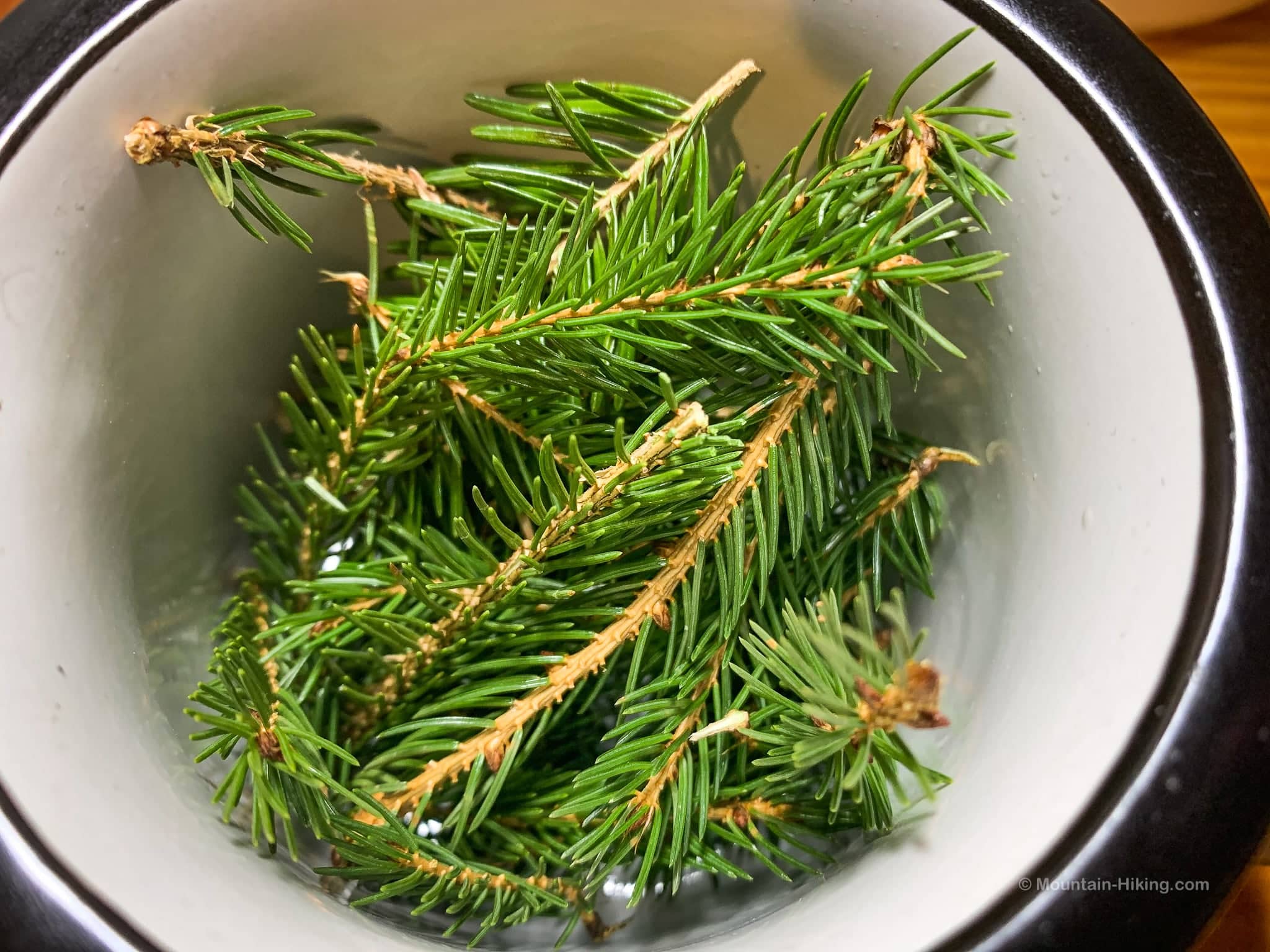
Fir also has single needles attached to the stem — the needles are flat and will not roll between your fingers.
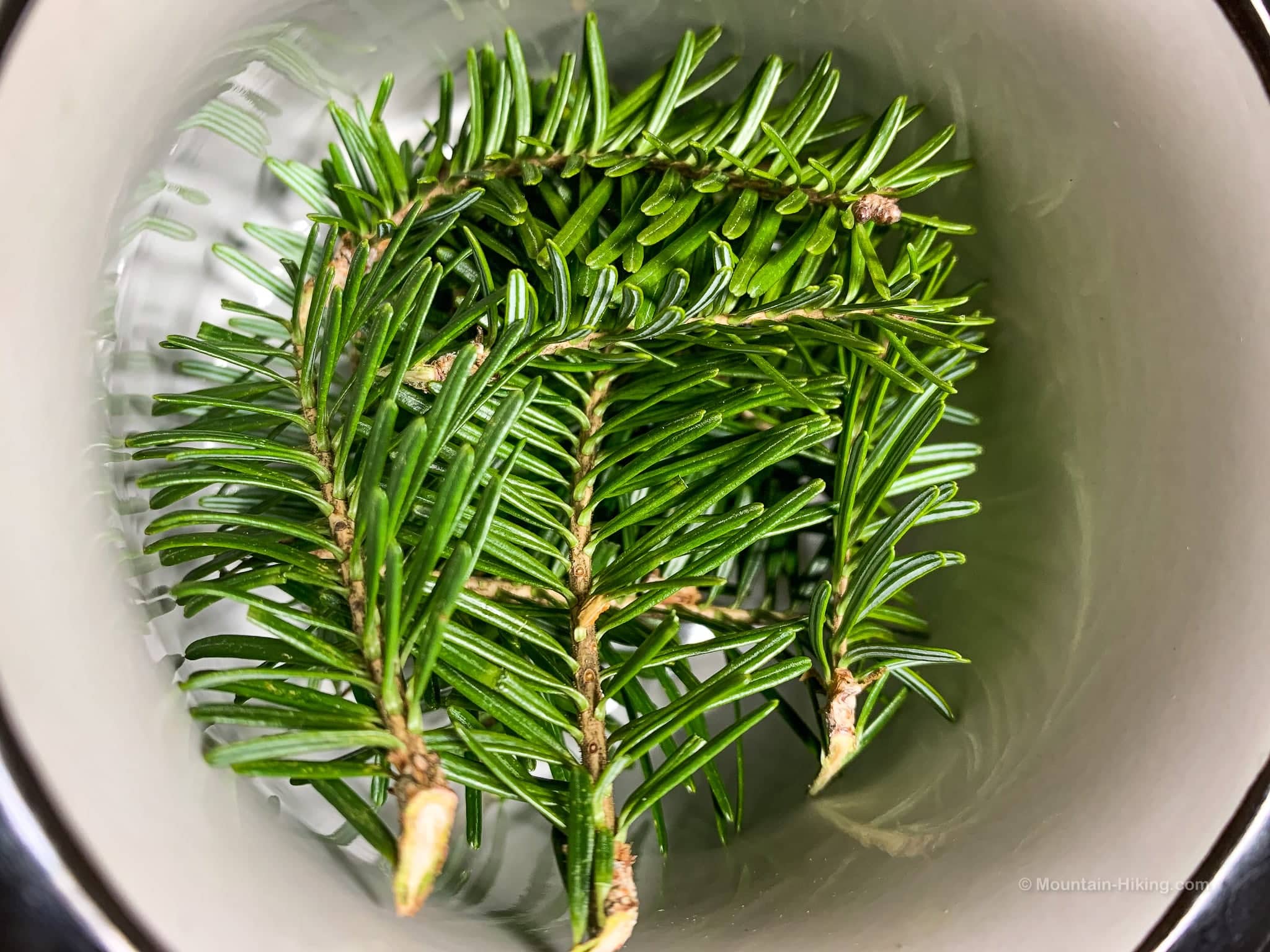
Identifying Hemlock
Note we are talking about the hemlock tree (Tsuga canadensis) — not the poison hemlock weed which is extremely toxic to humans. (Socrates was famously forced to commit suicide by drinking poison hemlock. The hemlock tree is not toxic at all. It’s delicious!)
Hemlock needles are flat and short, always less than an inch long. They are attached directly to either side of the twig and arranged in flat layers.
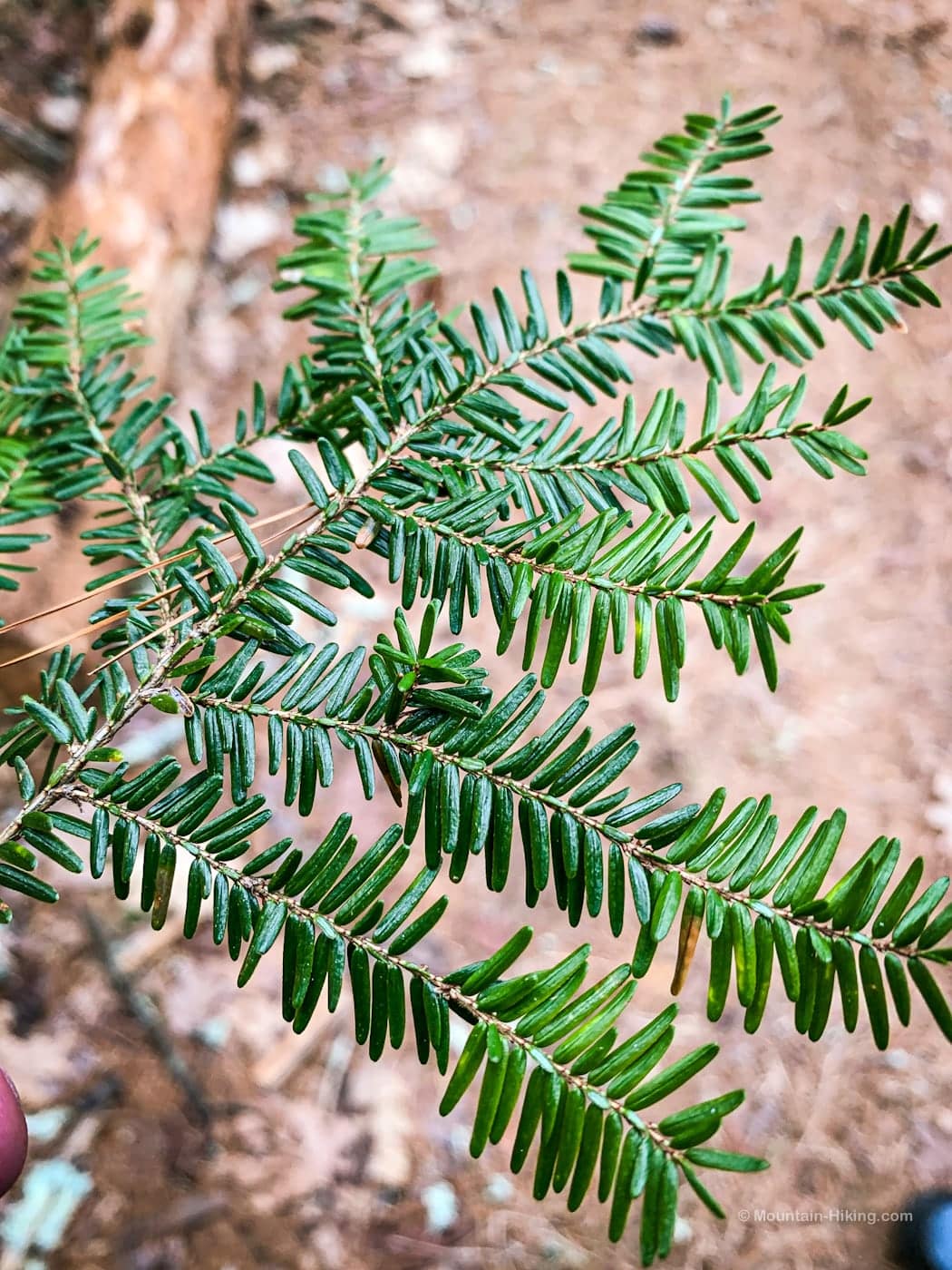
Notice the lighter green needles near the tip of the twig. This is newer growth. Some people brew only these lighter-green needles to make a sweeter tea. (These needles, however, have less vitamin content.)
Like fir needles, the underside of hemlock needles have white stripes. But hemlock needles are much shorter and finer. You will learn to differentiate their arrangement on the twig from each other quickly.

Preparing Pine Needle Tea
Preparation is very simple. First, gently wash your harvest in cold water to remove any dirt.
Next, tear off a few twigs and place them into an empty mug, as shown above.
I used to remove the individual needles but it’s painstaking work, and it’s not necessary.
When I pick up blowdown branches, sometimes the leaves can be a little dry-looking. In this situation, I’ll simply put the twigs in a glass of water for 12-24 hrs to rehydrate the needles. Works like a charm. (Leave them for longer than 24 hrs, however, and the needles will begin to rot.)
Some people like to muddle/bruise the needles to release more of the pine oil. Simply crush the needles between your fingertips, or use the back of a spoon to grind them against a cutting board, which will now smell piney. I’ve had good success with this; definitely more pine aroma and flavor.
Experiment with quantity. For a single cup (i.e. 8 oz of water), this is how I roll…

Next, just add hot water…
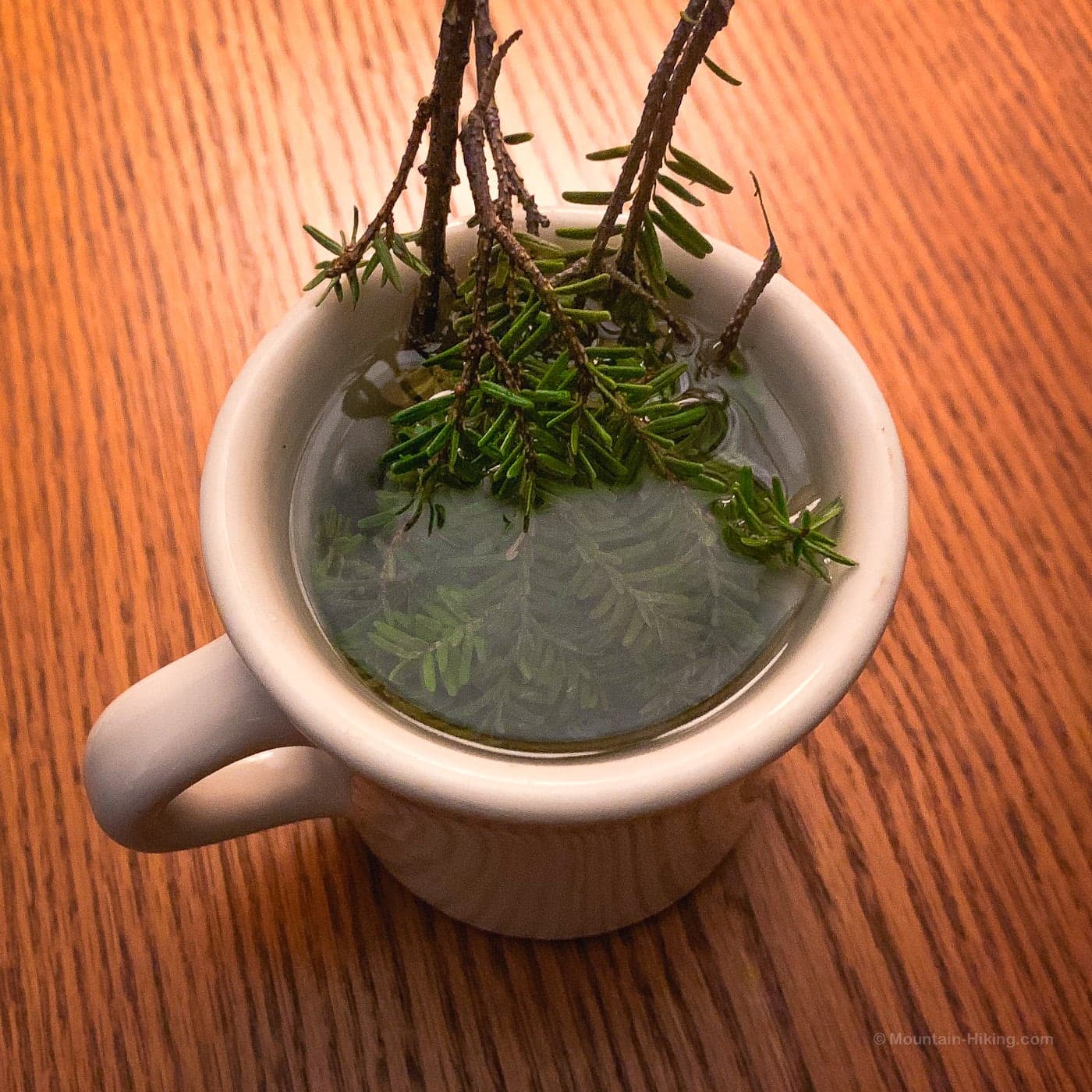
Allow the needles to steep for at least 3 minutes. Some people make a big pot of pine needle tea and allow their needles to steep for 20 minutes. (The proportions are apx ½ cup of loosely packed needles to 3 cups of water. Experiment with your own technique to get the flavor profile you prefer.)
This has always been a common form of tea in The Catskills. For example, before the settlers arrived, the Iroquois would regularly boil the young leaves of hemlock to make tea.
However long you brew, watch the needles for a very obvious color change. It happens quickly. The photo below shows before-and-after. These needles were left to steep for just a few minutes…
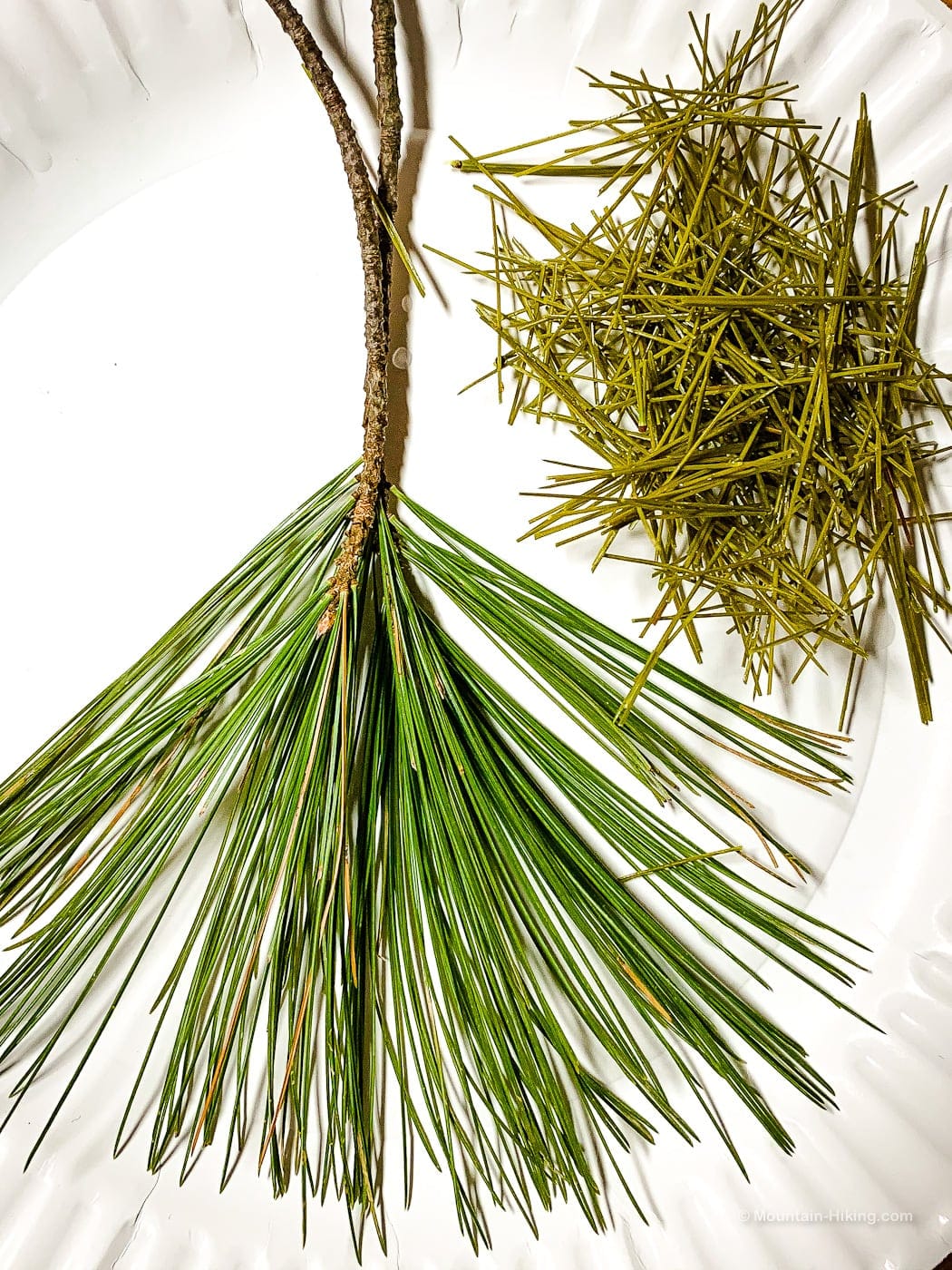
Pull out the twigs and needles, strain away any loose bits, and enjoy.
You’ll notice the water remains more-or-less clear, but it has an obvious aroma and flavor.
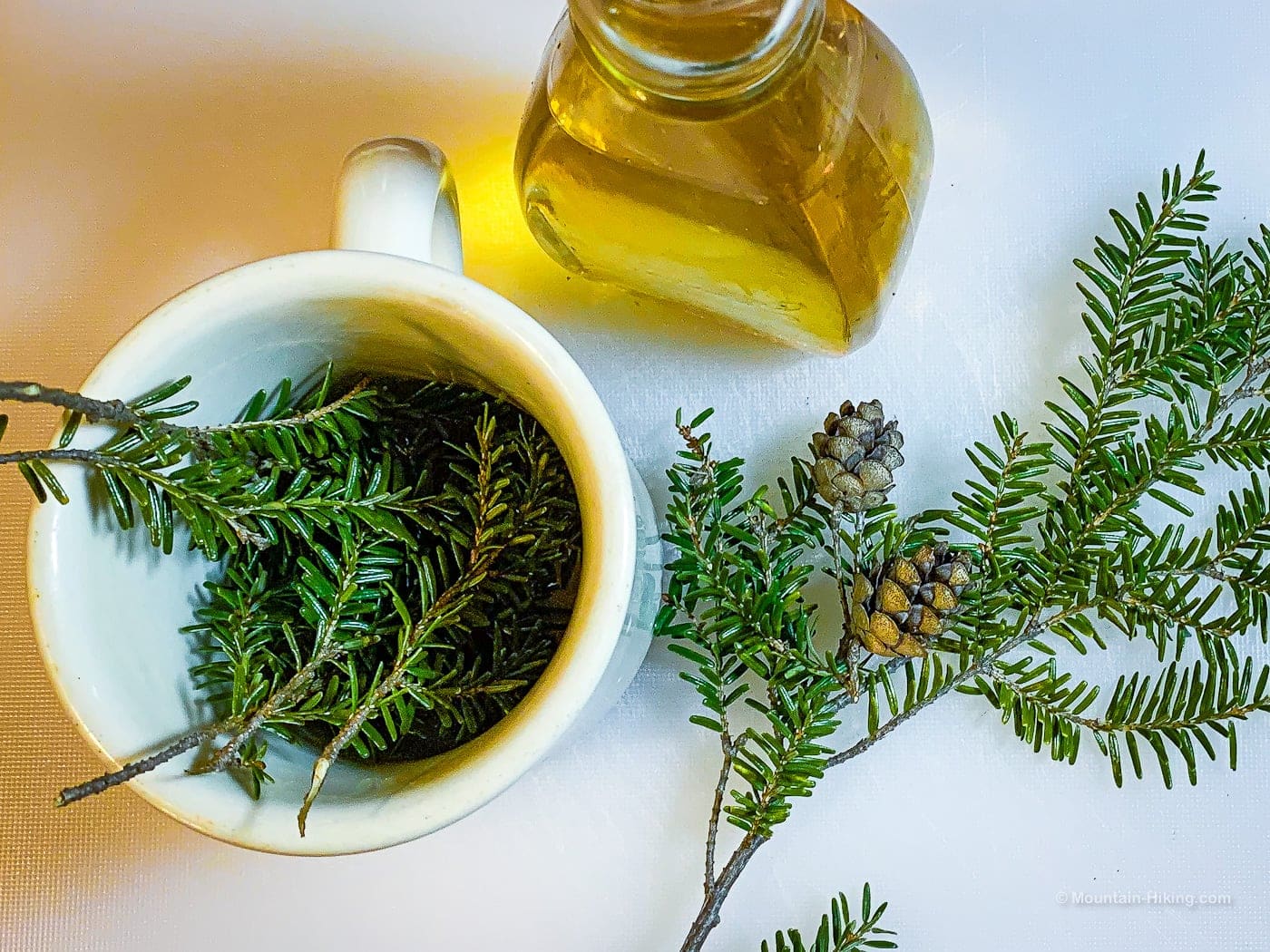
Eastern white pine produces a milder, sweeter tea than hemlock. Spruce is sweeter still, and delicious.
Hemlock makes great tea on its own. I love it. But it can be a touch bitter and you may want to sweeten it lightly.
Sometimes, I’ll add 1 tsp of shagbark hickory syrup. A new friend tried this combination and said…
“This tea is like drinking the forest. I’ve never experienced anything quite like it.”
Tweaks
Change things up with a small squirt of lemon juice.
You can also try all the usual tea-tweaks: cardamom pods, ginger, honey, etc.
Finally, pine needle tea is very easy to make while camping out. Ingredients don’t get any fresher than fresh-from-the-forest-floor.
Read More
Get full access…
Get instant access to the full version of this site and enjoy great supporter benefits: full galleries, full trail notes, early access to the latest content, and more.
Hot on the website right now…
Follow for more…
Follow my @TotalCatskills content on Instagram for regular hiking inspo and safe, inclusive community.

